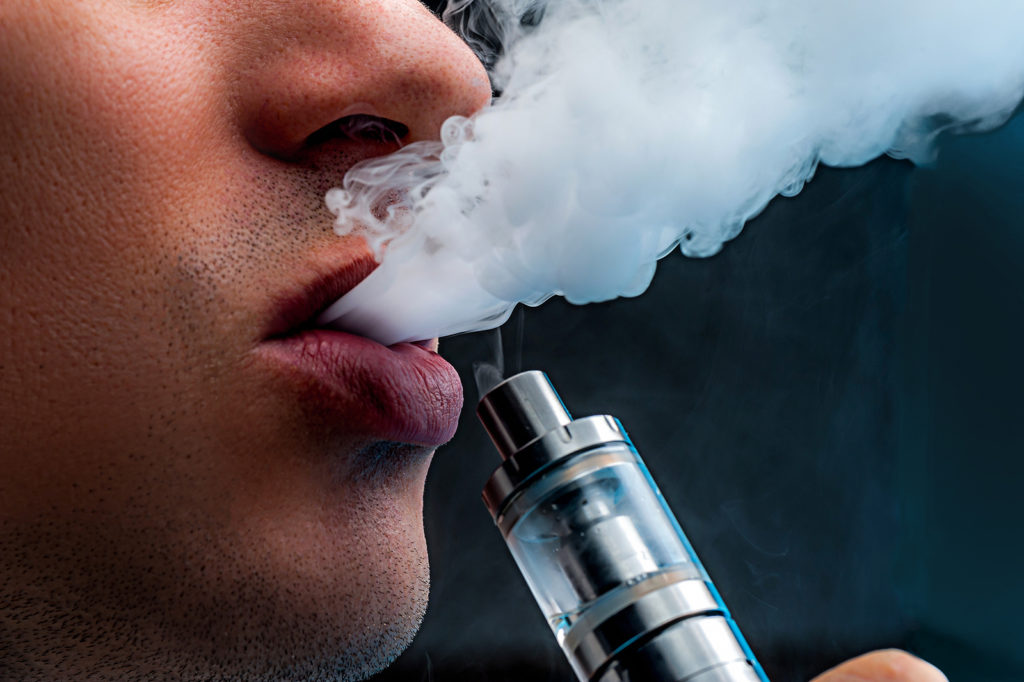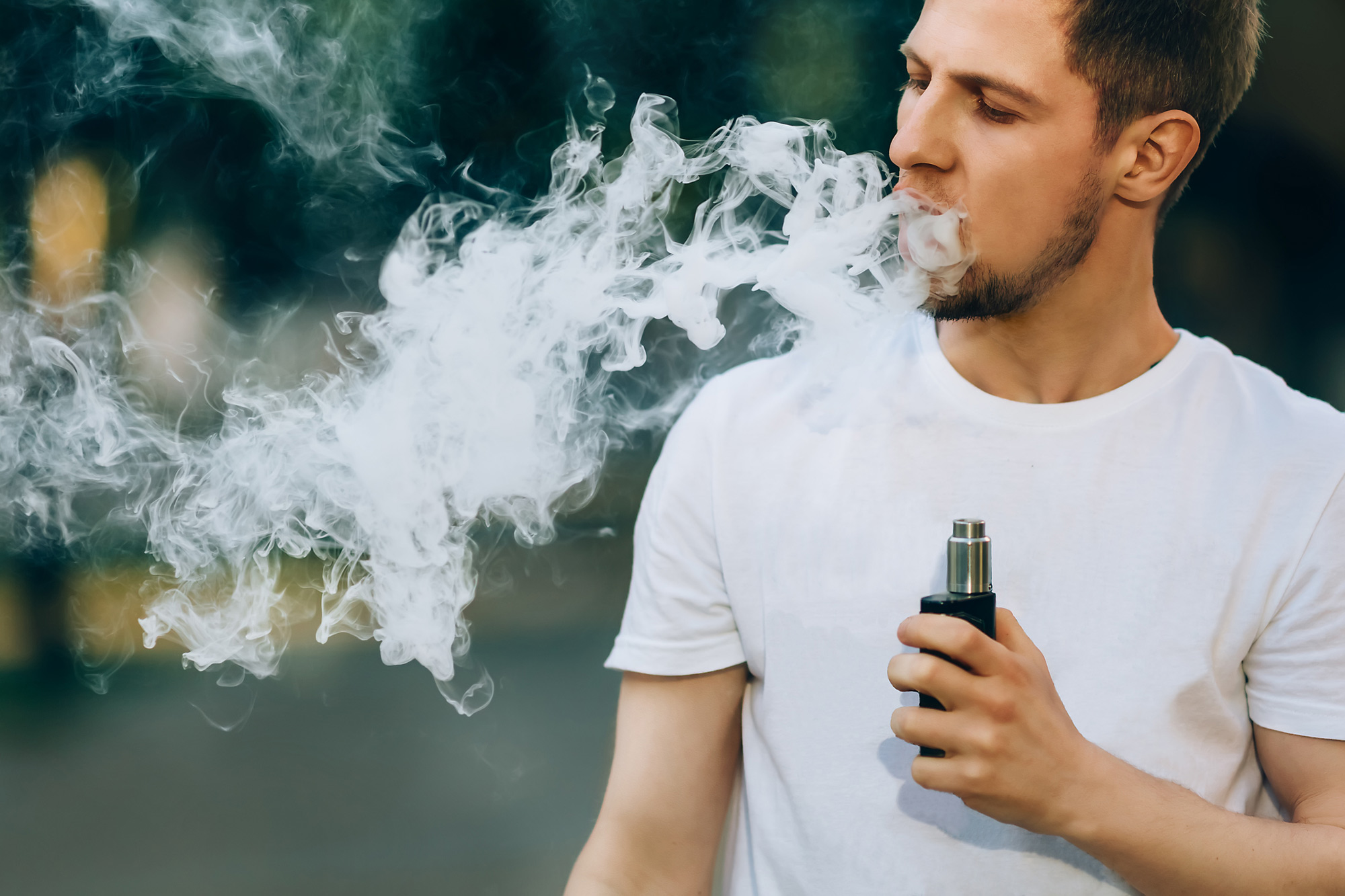WARNING: This product contains nicotine. Nicotine is an addictive chemical.
Welcome to the surprisingly complex world of vaping, where every puff is more than just a cloud of flavor—it’s a full-blown chemistry experiment! If you thought vapes were simply electronic lollipops for adults, think again. Beneath the hip exteriors and dessert-like flavors, vapes are brewing pots of chemical concoctions that could make a seasoned chemist blink twice.
But fear not! You don’t need a PhD to understand what’s going into your lungs. In this guide, we’ll unravel the mysterious mist of vaping with a touch of humor and a lot of relatable facts. From the base liquids that sound like they belong in a car’s engine, to the nicotine that keeps users coming back for more, we’ll explore what’s really in that vapor and why it matters. Buckle up, because we’re about to dive deep into the foggy world of vaping chemicals—no lab coat necessary!
Stepping further into the spotlight, propylene glycol is not just your average backstage technician. This versatile ingredient is revered for its ability to maintain a stable suspension, ensuring that the nicotine and flavorings are evenly distributed throughout every puff. No one enjoys a patchy performance, and PG ensures you get a consistent show every time. It’s also a bit of a chameleon, readily absorbing ambient moisture, which helps keep the vapor smooth and less irritating to the throat. Imagine it as the thoughtful director who makes sure the entire cast shines, preventing those awkward dry hits that can turn a vape session sour.
Meanwhile, vegetable glylycerin plays the charismatic lead actor, beloved for its dense, sweet vapor production. VG’s heavy, viscous nature allows it to produce those impressive clouds that vapers love to exhale. It’s the showstopper that brings the visual drama to the vaping experience, perfect for those who enjoy the aesthetic aspect of vaping as much as the nicotine hit. Unlike PG, which is all about the throat hit, VG is like the smooth jazz singer of the duo, delivering a softer, smoother sensation that’s easy on the inhale and spectacular on the exhale. Together, PG and VG create a vaping experience that’s as balanced as a well-rehearsed duet, each playing their part to perfection.

Indeed, the allure of nicotine is not just in its buzz but in its versatile offerings in the vaping world. Vapers have the luxury of tailoring their nicotine levels to suit their needs, ranging from the non-existent to levels that could make a seasoned smoker’s head spin. This customization is one of the vape’s most charming tricks, turning it into a personalizable gadget that can be as mild or as intense as desired. It’s a bit like a choose-your-own-adventure book, but instead of turning pages, you’re adjusting nicotine strengths. For those trying to wean off nicotine altogether, progressively lowering the dose in their vape juice can be an effective strategy, making nicotine both the hero and the villain in their quitting story.
Nicotine’s role extends beyond mere satisfaction; it acts as the bridge for many smokers looking to cross over to a supposedly less harmful means of indulgence. As nicotine enters the bloodstream, it triggers the release of dopamine, the feel-good neurotransmitter, providing a quick hit of pleasure much like a candy bar would—only less sugary and a lot more controversial. Its rapid absorption through the lungs, much faster than nicotine patches or gums, offers immediate relief from craving, which is why vaping can be particularly appealing to those desperate to ditch the cigarettes. But as with any star, it’s important to remember that nicotine can be a diva, demanding attention and often causing dependency, which is why its role in the world of vaping is as critical as it is complicated.
Indeed, the vaping industry’s flavor spectrum is as wild and diverse as a carnival, where every tent promises a new sensory delight. The appeal of such variety cannot be understated, as it caters to every palate, from those who enjoy the nostalgic taste of desserts to the adventurous souls eager to try fantastical concoctions like “dragon’s breath” or “mermaid tears.” These flavors are the crowd-pleasers, drawing users in with their aromatic allure and keeping the experience fresh and exciting. However, the secret to these mesmerizing flavors lies in the use of food-grade flavoring agents, which, while approved for digestion, enter murky waters when it comes to pulmonary safety. The transformation of these compounds when heated and inhaled might turn a seemingly benign substance into something far more reactive and less understood.
The case of diacetyl is a poignant example of such risks. Once a popular ingredient in flavors that required a creamy, buttery essence, its link to bronchiolitis obliterans—a serious and irreversible lung condition colloquially known as “popcorn lung”—has dramatically shifted its presence in vape juices. This condition, named for its discovery among workers in popcorn factories exposed to airborne diacetyl, highlighted the unforeseen dangers of inhaling substances deemed safe for ingestion. This revelation has spurred the industry to reformulate products, often replacing diacetyl with other compounds that have not yet been fully vetted for safety when inhaled, thus continuing the cycle of uncertainty. These developments underscore the complexity and potential hazards lurking behind those deliciously flavored clouds, reminding users that every puff carries a narrative far deeper than its taste.

As the vaping scene heats up, so too do the elements within your device, and not always with welcome results. The inner workings of a vape involve heating elements—typically coils made of metals like nickel, chromium, and even lead—that can degrade over time. When these metals get too cozy with the intense heat required to vaporize your favorite juice, they might start shedding into the vapor itself. This metallic guest list adds an unwanted crunch to the otherwise smooth inhale, creating a party no one intended to attend. Although the amounts are often minute, the cumulative effect of inhaling even trace amounts of metals over time is not fully understood and could potentially lead to health concerns down the road.
Then there’s the matter of those notorious chemicals, formaldehyde and acrolein, often associated more with laboratories and industrial processes than leisure activities. These chemicals can form when vape juice is heated to high temperatures, a process that might make your device feel more like a chemistry set than a smoking alternative. The irony here is palpable: while vapers may have left cigarettes to escape the smoke, they now find themselves navigating a haze of different chemicals. Though the levels of these compounds are typically much lower in vape smoke than in cigarette smoke, the presence of any toxic chemicals in something you inhale should give pause. These revelations provide ample food for thought—or rather, breath for thought—highlighting the importance of understanding not just what goes into your body, but how it changes once it’s heated up and turned into vapor.
Vaping, a practice embraced by many for its flavor variety and smoking cessation potential, involves more than meets the eye when considering what chemicals are in vapes. The core components of vape juice include propylene glycol and vegetable glycerin, which serve as the base fluids, carrying varying levels of nicotine and a plethora of flavorings that range from everyday fruits to exotic blends. While these ingredients are considered safe for ingestion, their impact when inhaled is less clear, particularly concerning flavorings like diacetyl, which has been linked to severe lung conditions. Additionally, vapes might expose users to contaminants such as trace metals from heating coils and harmful by-products like formaldehyde and acrolein, which are produced at high temperatures. Though these chemicals are present in much lower concentrations than in traditional cigarettes, their health implications remain a topic of concern and highlight the need for thorough understanding and regulation in the vaping industry.
If you want to know more, please refer to this article:
